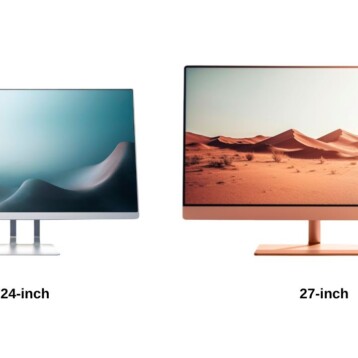|
In 2002 a team of researchers from Hewlett-Packard’s (HP) research laboratory in Bristol, UK began working on a new type of chip named “Memory Spot” that was unveiled in July of this year. Work on the chip began when the researchers sought to find a simple and cost-effective way of adding short sound bytes to pictures. Many other applications quickly arose and the development momentum gained power.
The memory spot chip is basically a miniature computer with onboard memory and wireless capability and is composed of six main parts: the processor, the memory and memory driver, the modem, the capacitor array, and the loop antenna. HP’s engineers were able to squeeze all these parts into a chip smaller than a grain of rice (2 mm to 4 mm square). The chip’s main purpose is to optimize the data flow and data storage of the chip. The wireless capability of the new chip is unique and was developed to perform very specific tasks. When the chip was introduced, many were quick to compare it to Radio Frequency Identification (RFID) technology. Although there are similarities between the two, HP clearly stated that the memory spot will not replace RFID technology, but rather compliment it.
|
Modern RFID technology was first demonstrated by researchers from Los Alamos, California in 1973. The most familiar form of RFID is the RFID tag. There are passive, semi-passive, and active RFID chips. Passive RFID chips use the minute electrical current induced in their antennas by incoming radio frequency signals to provide them with just enough power to operate and transmit data in response. Semi-active and active RFID tags include a battery, which helps them to stay on, respond more quickly, and transmit their information more effectively; the trade-off is that when the battery drains, it needs to be replaced or the tag will be unable to function properly. While passive RFID tags have a typical range of a few meters, active RFID tags can reach dozens or even hundreds of meters. These ranges make them perfect for monitoring product tracking, transport payments, wireless sensors, and various other applications.
RFID chips can save very little information (typically a few kilobytes) and have been criticized for not being adequately secure. RFID also has a relatively low data transfer rate, but this is usually not considered to be problematic due to the small amounts of data it handles. Memory spot chips, however, fare very differently in all these areas. Like passive RFID tags, they do not require batteries to operate, but rather receive and transmit their data from a very close range (around 1 mm). Such a close range makes for a much more secure technology and also enables transfer of much more data (100-1000 times more then RFID, according to HP). The memory spot also boasts a much larger memory (hence its name). The current version of the chip holds about half a megabyte of memory, but this could be improved in the future using more advanced memory and better chip lithography.
|
The differences between HP’s memory spot chip and existing RFID chips also translates into different applications. According to HP’s vision, apart from adding sound bytes to pictures, memory spot chips could, according to HP’s vision, be attached to almost any physical object to incorporate digital information. Patients could be supplied wristbands that hold their medical information or histories, packages could contain a chip that would store all the specifications of the product including user manuals, and official documents could contain a memory chip that would save an electronic version of their document.
The current version of the memory spot chip requires a special reader to be placed in close proximity to the chip to access the stored information. In order to read (or write) information from the chip, the reader needs to be connected to a reader-equipped device such as a computer or a pocket PC, digital camera, or printer, which will “display” (or play or print) the transferred information or likewise write added information that the user wants to add to the chip. HP envisions cell phone companies adding the memory spot chip to their phones enabling a simpler, more convenient and much wider adaptation of the new memory spot technology.
Q: When did you start working on the chip and what was the original aim of the research?
|
A: The work started about 4 years ago and was initially aimed at adding sound to still photos. This could be done by embedding the chip in the paper before it’s printed or by placing the memory spot onto the photo afterwards. Right now we laminate the tiny chip in plastic on a small carrier that’s about the size of a paper hole punch — this has adhesive on the back so that we can press the memory spot onto paper or any object. The memory spot can then be written (through the plastic lamination) with either an audio file or the jpeg data for the photo.
Q: How does the new chip differ from existing RFID chips and is it compatible with them?
A: The chip operates at 2.45 GHz (compared with 13.56 MHz for RFID) and has about 1000 times more storage capacity and 100-1000 times the data transfer rate. Its protocols are very different from RFID, so we will work with standards bodies on creating a new standard, or perhaps an extension of an existing one.
|
Q: What will be the range of the wireless data transfer of the new chip and how does it compare to existing RFID?
A: RFID is targeted at merchandise identification (like a product barcode) and tracking applications. Therefore, the tags need to be read at a long range, typically around 10 feet. Memory spot chips are written and read within 1 mm of the spot. This is fine, even desirable, for the kind of applications we are looking at. The privacy issue that plagues RFID (being able to track a person who is carrying an RFID tag) is non-existent for memory spot since you must be in virtual contact with the chip before you can read it. It also will be possible to password-protect the memory spot chip, although for now we only have chip authentication capability built in.
Q: The existing prototype holds only 512 KB of data. How much data will you be able to squeeze into the production model while still keeping size, cost, and power consumption to a minimum?
A: The data capacity and energy requirements will be determined by the silicon processing geometry (0.18 microns for the current chip, but this could be much smaller) and what memory technology is used (currently NAND flash, but there are more efficient ones). We can easily see how to get to several times the current capacity on a small chip.
Q: It seems that you will require extensive assistance from other companies in order to make the memory spot a wide-scale success. Do you agree?
A: There are two classes of markets, one in which the ecosystem is relatively small and self-contained (e.g., security applications, hospital applications, military applications) where the reader/writers, protocols, and applications can be completely done by a small number of companies. We could do these today without any new technologies as long as there was a good business model. For other markets (e.g., photography, advertising, office documents, etc.), you want the world to be populated with reader/writers – this can be accomplished by creating a standard and encouraging, among others, the cellphone companies to be part of the system. None of this requires any new technologies, but coincidently, HP Labs also has a separate research program on flexible displays.
Q: What applications do you predict the new chip will have?
|
A: Many consumer, enterprise, and public sector applications. For example, adding sound to photos (or the image data file), a movie trailer to a movie poster, medical records on patient wristbands in hospitals, medical records on dog-tags for soldiers, anti-counterfeiting feature for drugs, adding voice instructions (doctor, pharmacist) to a consumer medicine bottle, storing a document electronically on the printed copy, putting electronic instructions on game-cards, etc. These are just a few. Memory spot chips can be put on any object (because they are so small) that would benefit by storing digital data long with the object. Another example is attaching a copy of the manual to every piece of equipment so you always know where to find it. I believe that everyone will think of new ways to use the chip, beyond what we are currently thinking of.
Q: When should we expect the first commercial products based on the new chip?
Q: How much will the new chip cost when mass produced?
A: Pricing depends on volume (millions? billions? trillions?), business model, and value of the application. For example, a medical application could sustain a user price of several dollars. We’ve been looking to see if there are high volume applications that would sustain a price of $1, although we don’t know yet if that’s the right number. It looks like applications like putting sound on photos (particularly if they are young children) can easily support it.
















